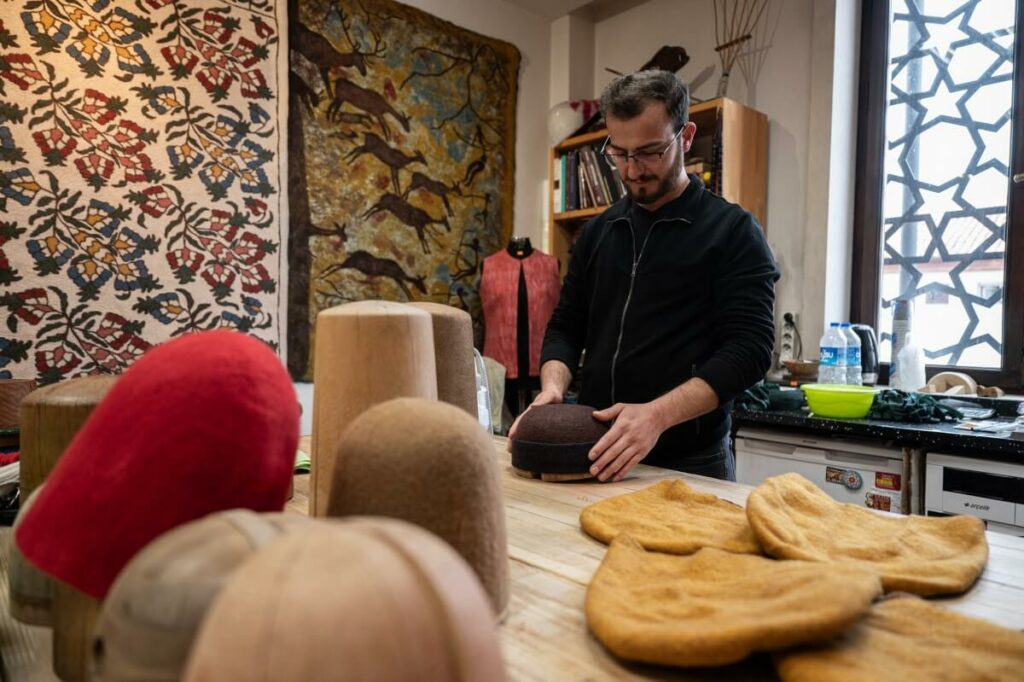The tall light brown hats worn by whirling dervishes are as intriguing as the elliptical dance performed in honor of the Sufi poet and mystic Rumi.
In Konya, a sprawling city in Turkey’s central Anatolian plain where Rumi spent most of his life and died 750 years ago, one of the last workshops makes these special “sikke” hats to order.
Yunus Girgiç refuses to sell sikkes to tourists because they are exclusively reserved for real dervishes.
And he makes sure they do not reach amateurs’ hands, quizzing potential clients about their motives for wanting the distinctive hat.
“I ask a few basic questions and immediately see who I am dealing with,” Girgiç told AFP.
At the start of the “sema” dance ritual, dervishes take off their long black coats but retain the sikke, which signifies the tombstone — the end of life on Earth when the dervish meets God.
The manufacturing secrets of these deeply symbolic felt hats — each one 26 to 27 centimeters (about 10 inches) tall — have been passed down for four generations to Girgiç.
Each one is produced from a kilo (half a pound) of goat or sheep wool, which is patiently stretched, dipped several times in soapy water and then rolled flat, like pie crust.
This centuries-old felting technique allows the fibers to be tightened and strengthened, said Girgiç, who works with two apprentices.
The resulting square of wool — now reduced to 350 grams — is molded onto wooden shapes whose size is adjusted to the customer’s head size, and left to dry for up to two days.
The material, relatively heavy and itchy on the forehead, is a “reminder of the discomforts of life on Earth,” Girgiç said.
His workshop produces “80 percent of the sikkes in the world,” the artisan added.
Musician Ashmi Benmehidi comes to collect his first sikke and tries it on with pride.
He left an insurance job in Montpellier in the south of France to practice the art of playing the “ney” — a reed flute which accompanies the sema ritual.
“I have just been invited to play in a dedicated group,” he said, adjusting his headdress.
“I’m very moved,” he added.
Girgiç’s workshop produces 30 to 80 sikkes a year. Each one sells for 2,000 liras (almost $70) and is designed to last around 45 years.
© Agence France-Presse

